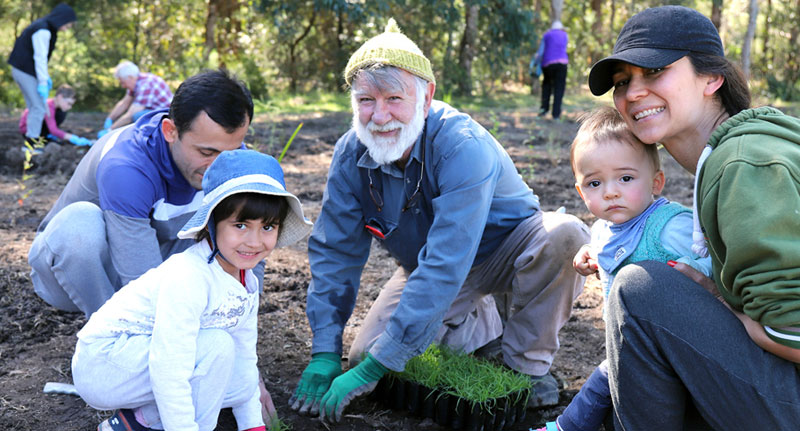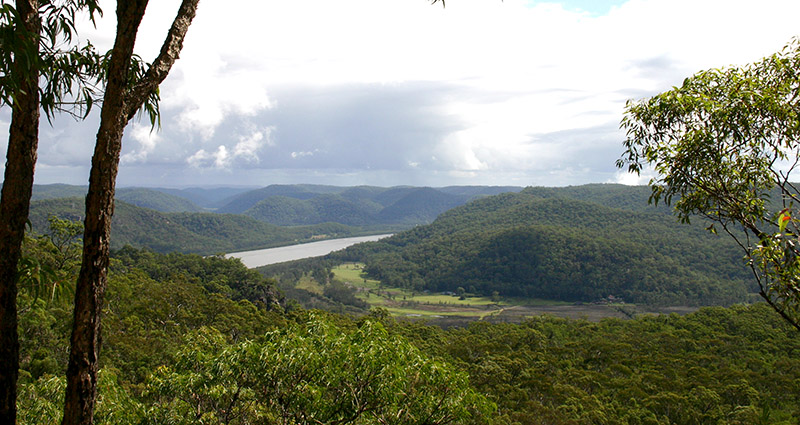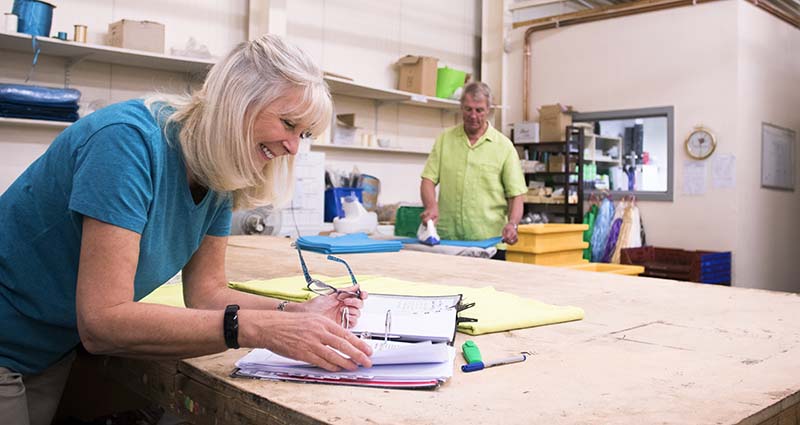Nip creek pollution in the bud
Protecting Our Waterways: Small Actions, Big Impact.

Did you know that up to 80% of pollution in our creeks and rivers comes from our homes, gardens and streets - washed down through outdoor stormwater drains?
We’re doing our best to catch what we can, but once pollution hits the drain, it’s usually already on its way to our creeks, rivers and the estuary.
You’d be surprised what counts as pollution!
It’s not just the obvious offenders like plastic bottles and wrappers - even grass clippings, leaves, soil, sediment, and gardening chemicals count as pollution.
Once these materials wash into stormwater drains, they can harm aquatic life like fish, frogs, freshwater spiny crayfish, and all the animals that depend on our rivers and waterways.
We need your help to stop creek pollution at its source.
Nip creek pollution in the bud - 10 simple steps to keep our creeks clean
 Use a mower catcher and put clippings in your green bin or compost them. Grass clippings left on hard surfaces can wash into drains, breaking down into nitrogen and phosphate that deplete oxygen in creeks, harming aquatic life and fuelling toxic algae growth.
Use a mower catcher and put clippings in your green bin or compost them. Grass clippings left on hard surfaces can wash into drains, breaking down into nitrogen and phosphate that deplete oxygen in creeks, harming aquatic life and fuelling toxic algae growth.
 Take advantage of the green bin already being at the kerb on bin night - sweep your street gutter and nature strip, then pop the leaves into the bin or compost them. Surprisingly, too many leaves can be detrimental to creek life when they break down, choking creeks of the light and oxygen they need.
Take advantage of the green bin already being at the kerb on bin night - sweep your street gutter and nature strip, then pop the leaves into the bin or compost them. Surprisingly, too many leaves can be detrimental to creek life when they break down, choking creeks of the light and oxygen they need.
 Building, renovating, or landscaping? Erosion and sediment control is a big one! Sediment from building sites is a major pollutant, - it can cloud water, fill up creeks and even carry other chemicals with it.
Building, renovating, or landscaping? Erosion and sediment control is a big one! Sediment from building sites is a major pollutant, - it can cloud water, fill up creeks and even carry other chemicals with it.
Did you know that one building site can lose up to four truckloads of soil in a single storm if not properly contained?
The solution is ground cover.
 Always pick up your dog’s poo and dispose of it in a public bin or your own red-lid garbage bin. This stops harmful bacteria and nitrogen from washing into stormwater drains and polluting creeks when it rains. Did you know you can even get pet poo compost bins?
Always pick up your dog’s poo and dispose of it in a public bin or your own red-lid garbage bin. This stops harmful bacteria and nitrogen from washing into stormwater drains and polluting creeks when it rains. Did you know you can even get pet poo compost bins?
 If you live near a creek, leave a buffer of native plants along the bank. They filter runoff, reduce erosion, and support local wildlife. If your creek banks are bare, consider planting a buffer of natives.
If you live near a creek, leave a buffer of native plants along the bank. They filter runoff, reduce erosion, and support local wildlife. If your creek banks are bare, consider planting a buffer of natives.
 Use pesticides sparingly, never before rain, and away from drains and creeks. Avoid products that are harmful to aquatic life (identified by a dead tree and fish symbol) and choose eco-friendly alternatives where possible.
Use pesticides sparingly, never before rain, and away from drains and creeks. Avoid products that are harmful to aquatic life (identified by a dead tree and fish symbol) and choose eco-friendly alternatives where possible.
 Harvest rain by installing a rainwater tank to reduce stormwater runoff and water your garden for free.
Harvest rain by installing a rainwater tank to reduce stormwater runoff and water your garden for free.
 When you see rubbish, pick it up and reduce single-use plastics. Every bottle or wrapper removed helps protect wildlife and water quality.
When you see rubbish, pick it up and reduce single-use plastics. Every bottle or wrapper removed helps protect wildlife and water quality.
 Avoid washing it on the road or driveways if you can as it sends detergent, oils, and heavy metals straight to the creek. Using phosphate-free eco-detergents and emptying soapy buckets on grass helps filter the runoff.
Avoid washing it on the road or driveways if you can as it sends detergent, oils, and heavy metals straight to the creek. Using phosphate-free eco-detergents and emptying soapy buckets on grass helps filter the runoff.
 Check the weather before fertilising. Hold off if rain is forecast within 24 hours. Use only the recommended amount; a little goes a long way and excess fertiliser washes away, wasting your money and harming rivers and creeks.
Check the weather before fertilising. Hold off if rain is forecast within 24 hours. Use only the recommended amount; a little goes a long way and excess fertiliser washes away, wasting your money and harming rivers and creeks.
What we at Council are doing to protect waterways
Every year, 700 tonnes of pollution (that’s the weight of 500 cars!) is captured by our stormwater treatment devices (SQIDs) before it reaches our creeks. That’s equivalent to:
- 4,600 bathtubs full of rubbish, leaves, and debris.
- 700 skip bins of rubbish, leaves, and sediment.
 437 Stormwater Quality Improvement Devices (SQIDs)
437 Stormwater Quality Improvement Devices (SQIDs)
Did you know Hornsby Shire Council is one of the pioneers of stormwater improvement in NSW? Since 1994, Council has installed over 430 Stormwater Quality Improvement Devices (SQIDs) across the Shire. These include:
- Gross Pollutant Traps (underground and above ground)
- Biofilters & rain gardens
- Sediment basins
- Wetlands
All designed to remove rubbish, sediment, nutrients, and heavy metals from stormwater. Working together, these devices help reduce algal blooms, erosion, and habitat loss, supporting biodiversity in our creeks and estuary. We’ve also constructed several stormwater harvesting and reuse systems, with most of them used to irrigate sports ovals across the Shire.
Water quality monitoring
We keep a close eye on our creeks and estuary by testing water at many different places across Hornsby Shire, from the upper catchment (creeks and rivers) to the estuary.
Our team checks water quality, aquatic life, and vegetation to spot issues early and guide action. It’s how we stay ahead of pollution, protect public health, and make sure our waterways stay clean and thriving for everyone. Regular estuarine testing also supports oyster farming, safe swimming and fishing.
Habitat and ecological protection along waterways
We monitor and protect riparian vegetation along our freshwater creeks and the estuary, because native plants growing beside rivers and creeks are among the most powerful tools we have for safeguarding waterway health.
Healthy riparian habitats mean healthy creeks
We’re committed to preserving vital riparian and estuarine habitats - like mangroves, saltmarshes, and seagrass meadows - that not only support wildlife but also improve water quality and build resilience against climate change.
These green corridors of plants act as living filters, trapping sediment and pollutants before they reach the water. Their deep root systems stabilise banks, reduce erosion, and help prevent property damage during floods. They also provide essential habitat for birds, insects, and aquatic life - connecting ecosystems and supporting biodiversity.
Together, we can make a difference
By working together, we can protect the Hawkesbury and the creeks and rivers we love. Every small action adds up to a cleaner, healthier environment - for aquatic life and all of us.







